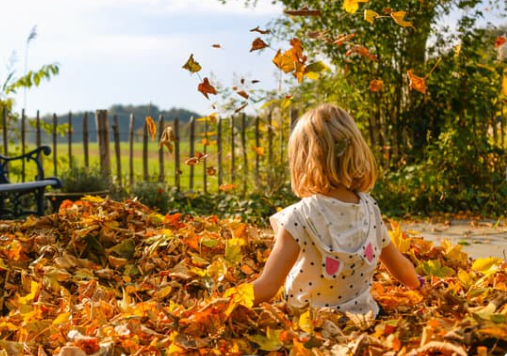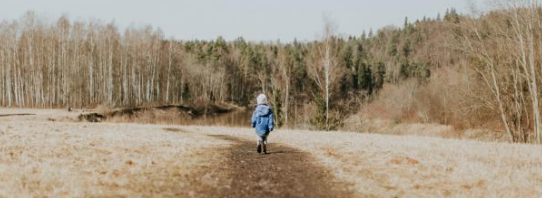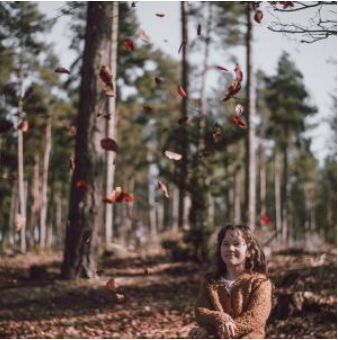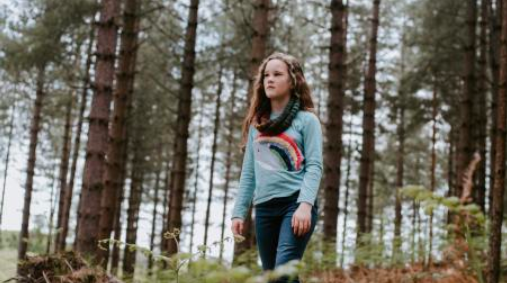Outdoor Solo Time: What Do Elementary Students Think?

Previously published in Volume 85, Issue 2
Abstract
A beneficial practice, outdoor solo reflection time supports sustainable wellbeing for all ages, but it is not well known how to effectively implement solos with young children at various ages. This project focused on how outdoor solo time, unplugged, can be used most effectively with different school-aged students. Six hundred students at a local elementary school participated in an unplugged, outdoor solo for 20 minutes three times per month during physical education class. Ninety-eight students (guardians) provided consent to complete the perception questionnaire following the semester. The majority of participants felt positive about outdoor solo time and found it most beneficial for relaxation, thinking, clearing their head, and unplugging. For future implementation, the length of time was reported as appropriate or even too short. As well, the outdoor setting and being unplugged were popular criteria for a solo practice.

Solo time has been a practice well-known to wilderness programs (Bobilya, McAvoy, & Kalisch, 2005) but less familiar in an elementary school setting. Benefits of solitude are many and far reaching (Long & Averill, 2003), and the use of natural, outdoor spaces to restore ourselves has been proven more effective than urban, built environments (Kaplan, 1995). The negative impact of technology on cognitive restoration is also beginning to become a focus in the field of health and physical education (Jiang, Schmillen, & Sullivan, 2018). Research on the relationship between nature interventions and health has been challenging because of the variety of nature settings as well as the complexity of health measures. We know that school-aged children can greatly benefit from silence and solitude (Kessler, 2000) but we need to learn more about how to realistically implement solo time in schools.
The purposes of this study were to: expose elementary students to the practice of outdoor, unplugged solo, to learn about what students of various ages think about solo time, and to learn about how teachers can implement solo time effectively into their practice. The grade four to nine school implemented regularly scheduled, 20 minute solo time in the outdoors (school yard) without technology through physical education class with all 600 students from January until May. Students were given no task but to ‘be in the moment,’ rest, and relax. The teacher facilitated an informal debrief session for 10 minutes following each solo time. Near the conclusion of the semester, the researcher administered a questionnaire to gather students’ perceptions of the solo practice.
Background and Literature
Technology Use
Technology has become a way of life; we are always connected to and communicating with others (Jiang et al., 2018). The effects of technology use have crept into our children’s lives, who average more than eight hours per day (cell phones, tablets, televisions, computers), which has been attributed to developmental delays (Rowan, 2010). A relatively new term that describes technology overuse, technostress, a sub dimension of stress, has documented symptoms of joint pain, headache, anxiety, panic, mental fatigue, and insomnia and has many direct or indirect negative effects on behaviour, thought, attitude, and psychology (Naas Cook, 2015). Alberta schools have recognized the reality of technology in students’ lives and have developed policies and language such as Digital Citizenship (Alberta Government, 2013) to help support educators as they navigate the world of critical thinking, responsible, and respectful online behaviour. Addiction to electronic devices is a growing issue and is most prevalent in the population under 30 years of age (Jiang et al., 2018). With technology everywhere, the ability of children and youth to disconnect may be difficult.
Cognitive Fatigue
Cognitive fatigue is a result of constant stimulation. This stimulation can be in the form of studying, writing, or concentrating on a task, but can also be attributed to technology overuse. We know that mental fatigue not only affects our concentration, but also reveals itself through emotions, actions, and behaviours. For example, when cognitively fatigued, we may be irritable or impatient and we may make hasty, impulsive decisions (Berto, 2014; Hartig, Evans, Jamner, Davis, & Garling, 2003; Kaplan, 1995). Additionally, our productivity declines when we are fatigued, we may not relate to others around us or notice social cues, and we may take greater risks that we may not have if we were cognitively rested (Berto, 2014; Kaplan, 1995). When mental fatigue occurs, behaviour issues may arise and health concerns, including mental health, may arise or magnify. It is important to take time for cognitive restoration in order to continue with work performance, maintain interpersonal relationships, and sustain sufficient sleep (Hartig et al., 2003). Disconnecting from technology and lessening screen time is not always realistic nor desirable but the practice of unplugging periodically in a restorative environment, such as outdoors, can allow for the renewal of cognitive resources to meet everyday demands (Berto, 2014; Jiang et al., 2018). The use of natural spaces for solo time may be the key to restoring our mental selves.
Benefits of Solo and Solitude
Structured periods of silence can help students calm down, gain a fresh perspective, and reorder their lives. Almost 20 years ago but still relevant today, Kessler (2000) recognized that, “brief periods of silence and solitude in school can also give students a tool for cultivating rest and renewal” (p. 36). It has been found that school-aged children and youth can greatly benefit from solo time. The foundation of all other emotional and social skills is the ability to identify feelings. Solitude can provide an opportunity to check in and discover these feelings and thoughts. Ironically, solitude can also create a feeling of intimacy with others. When we are alone, we become more aware of the relationships in our lives and can keep loneliness at bay as long as we focus on the meaningful connections we have with other people (Long & Averill, 2003). Spiritually, solitude also has far reaching benefits. For example, “… solitude enhances one’s ability to contemplate one’s place in the universe and one’s own thoughts and desires” (Long & Averill, 2003, p. 29).
A potential solution for feeling over-stimulated, solo experiences have been reported as one of the most influential aspects of organized programs (Bobilya, et al., 2005) with careful planning and support by teachers. Solitude has long been a practice for spiritual, religious, creative, and artistic gains and has been studied by many psychologists and wilderness programs (Bobilya, et al., 2005; Daniel, Bobilya, Kalisch, & McAvoy, 2014; Long, 2003). Often solitude is associated with painful, lonesome, and negative characteristics. Hermits, criminals, and recluses seek solitude. Long (2003) suggests that “… loneliness indicates deficiencies in the number or extent of one’s social relationships” (p. 22) and is a symptom of psychological disorders. Solitude is an important skill to learn from an early age (Tillmann, Tobin, Avison & Gilliland, 2018). Wilderness programs have used solo experiences with adolescents for many decades to increase participant autonomy which includes responsibility, leadership, and self-reliance (Daniel et al., 2014) and have shown to be perceived positively by participants even when they entered the solo with hesitations (Kalisch, Bobilya, & Daniel, 2011).

Benefits of Nature
The location of where we choose to unplug and engage in solo time makes a difference in how effectively and efficiently our brains relax and recover from stress. Research on cognitive restoration has found that exposure to natural environments helps aid recovery from physiological stress and mental fatigue better than urban settings (Berto, 2014; Capaldi, Passmore, Nisbet, Zelenski, & Dopko, 2015; Hartig et al., 2003; Kaplan, 1995; Pearson & Craig, 2014).
Kaplan’s (1995) Attention Restoration Theory (ART) has been around for decades, yet is still used in recent research; a few of the components offered by nature include a sense of ‘being away’ and an effortless stealing of our attention called ‘fascination” that helps restore our cognitive functions. Nature’s restorative influences have a direct benefit on wellbeing (Capaldi et al., 2015).
A recent study of post-secondary students found that, although resistant at first, students were pleasantly surprised following an opportunity to unplug alone in nature for 60 minutes; many reported that they would use alone time in their daily life to help with stress management (Kell, 2016). Natural settings have restorative influences over our behavior as well as our physiological responses. For example, our inhibitions allow us to delay impulsive actions while we reflect and calculate. When we become cognitively fatigued, we become impulsive, hasty, and may act impatiently. Exposure to nature has been shown to have a positive influence on self-control, inhibiting impulses, and delaying gratification. Jiang et al. (2018) found that the use of electronic devices in a natural setting counteracted the restorative benefits of nature.
Nature’s restorative influences, as well as its unique ability to aid cognitive fatigue, suggest that spending time alone, reflecting in a park, green space, or a wilderness setting could be time well spent for overall mental health (Capaldi et al., 2015; Pearson & Craig, 2014).
Solos can be practiced in various contexts, for various lengths of time, and with differing objectives, making outdoor solo time an ideal stress management tool.
The main research question for this study was “How can teachers effectively use solo time as a practice with grades four through nine students to support wellbeing?” A main sub-question was “How do students perceive regularly scheduled outdoor solo time?”
Methods
Study Setting
This study was a project involving one local elementary Charter school from grades four to nine. The population of the school was roughly 600 students equally distributed in each grade. Charter schools are autonomous, non-profit public schools that follow provincial curricula but may provide education in a unique, enhanced, or particular way to meet the needs of a specific group of students (Alberta Education, 2018). The school for this project had an emphasis on inquiry, innovation, research, and learning outside of the school (off-campus). The teachers and administration were willing and eager to try unique teaching methods and projects. Also notable, each student in this school receives an iPad (grades four to seven) or an iMac (grades eight and nine) that they are responsible for, use regularly, and complete school work on/with. The study was approved by the researchers’ university’s Human Research Ethics Board.
Study Participants
Ninety-eight participants consisted of students both male and female from grades four through nine and were recruited through purposive sampling (students at the school) and convenience sampling; only those students who had parental or guardian consent to participate and had also participated in weekly outdoor solo time during their physical education classes from January until May were eligible to participate. Consent forms were collected by the office administrative staff so that no teacher would know who was participating. Additionally, the participants needed to assent to the questionnaire and complete it willingly, even after obtaining parental/guardian consent. Only one participant who had consent did not assent to the questionnaire. Of the participants that were present on the day of the questionnaire distribution and facilitation (N = 98), 25.5% of participants were in Grade 4 (n = 25), 36.7% of participants were in Grade 5 (n = 36), 16.3% of participants were in Grade 6 (n = 16), 15.2% of participants were in Grade 7 (n = 15), 0% of participants were in Grade 8 (n = 0), and 6.1% of participants were in Grade 9 (n = 6).
Data Collection and Analysis
The method of data collection was an online questionnaire created using Google Forms which is the university’s preferred secure platform. The online questionnaire consisted of 10 scaled or multiple-choice questions pertaining to each participant’s overall enjoyment level of outdoor solo time, what participants found solo time useful for, what participants thought about during outdoor solo time, and how outdoor solo time made the participants feel physically and emotionally. Rating scale questions were a continuous scale (Creswell & Creswell, 2018) of one through four leaving no neutral option. Grade was required in order to compare across grade levels but gender was not asked. The questionnaire was vetted by two teachers and the principal of the school in order to confirm that students of various ages would understand each question and be able to answer it easily. The length of the questionnaire was taken into consideration and it was purposefully created to be short in duration as well as include a minimal number of open-ended questions.
The online questionnaire was distributed and facilitated by the research team with the utilization of participant electronic devices (tablets or laptops) and QR codes provided by the researchers which linked to the questionnaire. The participants’ teachers were never made aware of who was participating in the study, and they were not present in the room during data collection. Students were made aware through the consent form, verbal instructions, and again at the beginning of the online survey that participation in the study would have no impact on their grades.
The questions were analyzed using descriptive statistics that “… provide you with a summary of the main characteristics about the data collected… to provide basic information about the sample group and overall findings from the study” (Van Lunen, Hankemeier, & Cailee, 2015, p. 46).
Various assumptions of the present study consist of participants taking their time and carefully considering each question, participants answering each question truthfully, and that participants regularly and properly participated in outdoor solo time within their physical education classes as facilitated by the physical education teachers.

Findings
Of the 98 participants that participated in the study, 100% of participants had parental or guardian consent.
Enjoyment and Length of Time
When asked how participants enjoyed outdoor solo time overall, 73.5% of students liked solo time (33.7% of participants rated outdoor solo time as 4 out of 4, and 39.8% of participants rated outdoor solo time as 3 out of 4) and 26.5% of participants did not enjoy outdoor solo time (20.4 of participants rated outdoor solo time as 2 out of 4, and 6.1% of participants rated outdoor solo time as 1 out of 4).
When asked about the appropriateness of the length of time per outdoor solo experience (20 minutes), 41.8% of participants felt that 20 minutes was about right, 16.3% of participants felt that 20 minutes was a bit too short, 12.2% of participants felt that 20 minutes was way too short, 24.5% of participants felt that 20 minutes was a bit too long, and 5.1% of participants felt that 20 minutes was way too long.
Uses and Thoughts
When asked what outdoor solo time was most useful for, 86.7% of participants reported that outdoor solo time was useful for relaxation, 76.5% of participants reported that outdoor solo time was useful for time to think, 39.8% of participants reported that outdoor solo time was useful for mental organization, 70.4% of participants reported that outdoor solo time was useful for clearing their head, and 78.6% of participants reported that outdoor solo time was useful for unplugging from technology.
When asked what participants thought about during outdoor solo time, combinations of positive and negative considerations were present during various outdoor solo experiences. During outdoor solo time, positive (overlapping) considerations included that 77.6% of participants thought about hobbies, 54.1% of participants thought about positive relationships, 53.1% of participants thought of positive home life and happiness, 44.9% of participants thought about positive school experiences, 41.8% of participants thought about eating, 36.7% of participants thought of positive self-reflections and happiness, and 17.3% of participants thought of goal setting. Negative (overlapping) considerations of participants during outdoor solo time included that 23.5% of participants thought about negative school experiences, 22.4% of participants thought about negative relationships, 20.4% of participants thought of negative self-experiences, and 12.2% of participants thought about negative home life and worries. Furthermore, 14.3% of participants reported that they thought about nothing during outdoor solo time.
When asked how participants felt after outdoor solo time, 58.1% of participants felt recharged (17.3% of participants rated their recharged levels at 4 out of 4, and 40.8% of participants rated their recharged levels at 3 out of 4) and 41.8% of participants felt tired (11.2% of participants rated their recharged level as 1 out of 4, and 30.6% of participants rated their recharged levels as a 2 out of 4).
Unplugging and Outdoors
When participants were asked if they liked being unplugged during their outdoor solo time, 80.6 % of participants reported that they liked being unplugged (38.8% of participants rated being unplugged as a 4 out of 4, and 41.8% of participants rated being unplugged as a 3 out of 4), and 19.4% of participants reported that they did not like being unplugged (7.1% of participants rated being unplugged as a 1 out of 4, and 12.2% of participants rated being unplugged as a 2 out of 4).
This question was supplemented by asking participants if they liked spending solo time outside. 78.6% of participants enjoyed solo time outside (44.9% of participants rated solo time outside as 4 out of 4, and 33.7% of participants rated solo time outside as 3 out of 4) and 21.4% of participants did not enjoy solo time being outside (7.1% of participants rated solo time outside as 1 out of 4 and 14.3% of participants rated solo time outside as 2 out of 4).
On Their Own Time?
Finally, when participants were asked if they would choose to practice outdoor solo time outside of class time, 14.3% of participants said yes, 28.6% of participants said probably yes, 24.5% of participants said no, and 32.7% of participants said probably not. If a participant said yes/probably yes or no/probably not regarding the practice of outdoor solo time outside of class time, they were directed to a separate question asking for reasoning as to why or why not.
The top 4 (overlapping) reasons participants would not/probably not participate in outdoor solo practice outside of class time is because they found it boring (60.7%), they did not feel they had the time (42.9%), they didn’t feel as if they needed solo time (33.9%), or they got lonely during outdoor solo time (19.6%).
Furthermore, the top 4 (overlapping) reasons participants would/probably would participate in outdoor solo practice outside of class time is because of the relaxation benefits if they are stressed or worried (57%), they liked alone time and found it beneficial (40.5%), outdoor solo time helped them clear their heads (35.7%), and they enjoyed unplugging from technology for part of their day (28.6%).

Discussion
Some notable findings are worth discussing in relation to the purposes of this research. We sought to find out how teachers can use outdoor, unplugged solo time as a practice with elementary school students in order to enhance and support wellbeing. We also were curious about how students perceive the practice of solo time.
One of the findings that stands out is overall enjoyment of the solo reported by participants. Almost three quarters (73.5%) of the students enjoyed the practice of regular solo time (reported a 3 or 4 out of 4 on the scale). 100% of the grade seven participants reported enjoyment, followed by 78% of the grade five participants and 67% of the grade nines. The grade four participants had the lowest reported enjoyment with 60%. These results indicate that solo time was a positive experience for most students, even at the younger grades. This aligns with results from previous research of post-secondary students’ solo experiences, that most participants reported a positive experience (Kell, 2016). A teacher may want to consider that grade fours also reported the lowest satisfaction rating of all the grades regarding the length of time. Only 60% of the grade fours said they thought the length was just right or too short. The length of time for a solo may need to be shorter for younger students, or perhaps a task should be assigned such as journaling, drawing, walking, or other objectives that can be related to curricular outcomes. Although the location or objective of solo time can look different in various classrooms or contexts, it is still beneficial for students of all ages to learn to have alone time and practice the skill (Bobilya, et al., 2005; Kessler, 2000; Long & Averill, 2003).
Another finding that is worth discussion was the enjoyment of being unplugged and leaving technology behind for the solo time practice. It was the grade nine group of participants who reported the lowest enjoyment in this factor (50% liked being unplugged) and the grade four participants second lowest (60% enjoyed this aspect). Over 80% of the grades five, six, and seven participants enjoyed being unplugged. This finding reflects the need to intentionally leave technology behind for periods of time in order to take a cognitive break throughout the day (Jiang et al., 2018). The students at this school, in particular, might feel added pressure to always be connected since they are provided with a tablet or laptop for school. Expectations for technology use may be perceived or real at particular ages. It appears that older students feel the need to be more connected than their younger counterparts. Although students could take their devices with them for solo time, we know that technology reverses the restorative benefits of spending time in nature (Jiang et al., 2018).
The question that asked students if they felt more tired or refreshed after solo time received mixed results. The 4-point scale had options of 1 or 2 as ‘Tired’ and 3 or 4 as ‘Refreshed.’ The Grade 6 (81%) and Grade 9 (83%) groups reported feeling refreshed while the Grade 7 (47%) group reported feeling more tired than refreshed. The Grade four (52%) group and Grade 5 (64%) groups were more of an even split between tired and refreshed. Feeling tired is not necessarily negative, because it could indicate being relaxed and untroubled. A number of students who reported feeling tired also reported that solo time was useful for relaxing (n = 33). Feeling cognitively restored might manifest in feeling relaxed, not irritated, calm, and with a clear head (Berto, 2014; Kaplan, 1995). However, for future research it would be appropriate to choose different language or be more intentional when wording a question. One might ask students if they feel more or less relaxed, and then further, if they feel recharged.
One of the most positive participant results came from the enjoyment of spending solo time outdoors. Although the weather was less than ideal on a number of occasions, the physical education teacher attempted for most solo time practices to take place outside in the school yard. With the exception of the Grade 9 group where only half of the participants reported enjoyment in the outdoors for solo time, all the other grade groups reported high levels of enjoyment (Grade 4 = 72%; Grade 5 = 78%; Grade 6 = 81%; grade 7 = 100%). This school spends a lot of time outdoors as part of their Charter, so the results may vary from context to context. One particular aspect to keep in mind during facilitation is to make sure students are comfortable and confident to begin with, while learning the skill of solo time (Daniel et al., 2014; Kalisch et al., 2011). Later, as students are more comfortable with the practice, they can be asked to spend time in more unique settings (this can be different for each student, school, teacher, etc.) for longer durations. Research has shown that the outdoor setting often goes hand in hand with effective cognitive restoration practices, stress management techniques, and rest (Capaldi et al., 2015; Kaplan, 1995).

Conclusion and Implementation
We know that solitude has many far reaching benefits and has been used for many purposes and in many contexts throughout history, both past and present (Bobilya, et al., 2005; Daniel et al., 2014; Long & Averill, 2003). The addition of using natural settings for cognitive restoration and leaving technology behind increases our ability to rest, recover, and perform at our best (Berto, 2014; Capaldi et al., 2015; Jiang et al., 2018). Students of all ages can and should learn to spend time alone (Kessler, 2000; Tillmann et al., 2018).
To implement solo time in a classroom or school, it is best to begin small. Short duration or length of time allows students to become comfortable with the skill. After all, solo is a skill to be learned and practiced. Perhaps begin with familiar surroundings such as inside the classroom or gymnasium. Each student can choose a special spot to sit and return to each time. Be sure no students are interacting with each other; sometimes strategic placement is the key ingredient to reinforce the idea of ‘being alone’ rather than the actual distance. Some students may feel more comfortable being closer to others, while some may want to distance themselves to a more private spot. A teacher knows their students best, and you may choose to assign a task or objective for each solo, slowly lessening the task until there is no longer a task. For example, students may be asked to reflect on a story that was just read, and sketch or journal about their reflections for 10 minutes. Following, the next solo might allow them 15 minutes to write. Next time, students won’t be asked to write or sketch, but rather, just think about their reaction. Students can also be allowed the option to walk around, if the context and setting allow. Some students may not be able to sit in one spot for a length of time and may first need the ability to move around. Of course, boundaries must be set and rules about disrupting other classes or students must be in place. A very natural fit for an objective during solo time is to set goals or reflect on previous goals; often physical or health education is a great starting point.
Although you may experience resistance from students or even parents, remember that short periods of solitude are beneficial for academic success and behaviour management. Leaving technology behind and spending time outdoors are also intentional decisions that are beneficial to our wellbeing and important life skills to learn. Students may learn to love solitude and use this simple, accessible skill in other areas of their lives for years to come.
References
Alberta Education (2018). Charter Schools in Alberta: An overview of charter schools in Alberta. https://education.alberta.ca/charter-schools/about-alberta-charter-schools/?searchMode=3 accessed November 13, 2018.
Alberta Government (2013). Technology briefing: Digital Citizenship. No. 2 Oct 2013.
Berto, R. (2014). The role of nature in coping with psycho-physiological stress: A literature review on restorativeness. Behavioral Sciences, 4, 394-409. https://doi.org/10.3390/bs4040394
Bobilya, A. J., McAvoy, L. H., & Kalisch, K. R. (2005). The power of the instructor in the solo experience: An empirical study and some non-empirical questions. Journal of Adventure Education and Outdoor Learning, 5(1), 35-50. https://doi.org/10.1080/14729670585200581
Capaldi, C. A., Passmore, H., Nisbet, E. K., Zelenski, J. M., & Dopko, R. L. (2015). Flourishing in nature: A review of the benefits of connecting with nature and its application as a wellbeing intervention. International Journal of Wellbeing, (5)4. https://doi.org/10.5502/ijw.v5i4.449
Creswell, J. W., & Creswell, J. D. (2018). Research design: Qualitative, quantitative, and mixed methods approaches (5th ed.). Thousand Oaks, CA: Sage.
Daniel, B., Bobilya, A. J., Kalisch, K. R., & McAvoy, L. H. (2014). Autonomous student experiences in outdoor and adventure education. Journal of Experiential Education, 37(1), 4-17. https://doi.org/10.1177/1053825913518892
Hartig, T., Evans, G., Jamner, L. D., Davis, D. S., & Garling, T. (2003). Tracking restoration in natural and urban field settings. Journal of Environmental Psychology, 23, 109-123. https://doi.org/10.1016/S0272-4944(02)00109-3
Jiang, B., Schmillen, R., & Sullivan, W. C. (2018). How to waste a break: Using portable
electronic devices substantially counteracts attention enhancement effects of green spaces. Environment and Behavior,1-28. https://doi.org/10.1177/0013916518788603
Kalisch, K. R., Bobilya, A. J., & Daniel, B. (2011). The Outward Bound solo: A study of participants’ perceptions. Journal of Experiential Education, 34(1), 1-18. https://doi.org/10.1177/105382591103400102
Kaplan, S. (1995). The restorative benefits of nature: Toward an integrative framework. Journal of Environmental Psychology, 15, 169-182. https://doi.org/10.1016/0272-4944(95)90001-2
Kell, S. D. (2016). Unplugging in the wilderness: Student perceptions of a solo experience. Unpublished manuscript. Mount Royal University.
Kessler, R. (2000). The soul of education: Helping students find connection, compassion, andcharacter at school. Alexandria, VA: ASDC.
Long, C. R. & Averill, J. R. (2003). Solitude: An exploration of benefits of being alone. Journal for the Theory of Social Behaviour. 33:1. https://doi.org/10.1111/1468-5914.00204
Naas Cook, L. (2015). Restoring a rhythm of sacred rest in a 24/7 world: An exploration of technology Sabbath and a connection to the earth community. The International Journal of Religion and Spirituality in Society, 5(4), 17-27. https://doi.org/10.18848/2154- 8633/CGP/v05i04/51119
Pearson, D. G., & Craig, T. (2014). The great outdoors? Exploring the mental health benefits of natural environments. Frontiers in Psychology, 5(1178). https://doi.org/10.3389/fpsyg.2014.01178
Rowan, C. (2010). Unplug – don’t drug: A critical look at the influence of technology on child behaviour with an alternative way of responding other than evaluation and drugging. Ethical Human Psychology and Psychiatry, 12(1), 60-68. https://doi.org/10.1891/1559-4343.12.1.60
Tillmann, S., Tobin, D., Avison, W., & Gilliland, J. (2018). Mental health benefits of interactions with nature in children and teenagers: A systematic review. Journal of Epidemiology and Community Health. https://doi.org/10.1136/jech-2018-210436
Van Lunen, B. L., Hankemeier, D. A., & Cailee, E. W. (2015). Evidence-guided practice: A framework for clinical decision making in athletic training. Thorofare, NJ: Slack.









